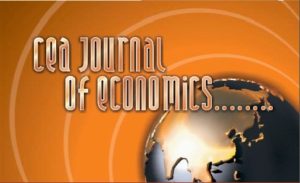Policy Paper: Overview of Balanced Regional Development and Fiscal Decentralization: Regional Disparities and Fiscal Decentralization
Fiscal decentralization and balanced regional development are closely related instruments and there is a need when making policies for one of these instruments of economic progress to take into account the challenges for the other instrument as well. In the Republic of North Macedonia (RNM), both fiscal decentralization and balanced regional development are Constitutional categories, so the field of research in this document is socio-economic, because in the Constitution of the RNM it is defined as the economic progress of the regions.
RNM, on the one hand, does not have success in the balanced regional development, and on the other hand, there is a need expressed by the Government and other stakeholders for a “new wave of decentralization”. So far, researches are prepared about balanced regional development and fiscal decentralization, but those researches are thematic and concern either regional development or decentralization separately as separate phenomena and do not go into the interactions and impact of fiscal decentralization on the balanced regional development in RNM. This analysis aims to fill that research gap because these phenomena in real life do not act separately from each other and certainly have mutual influence. This is important for policy makers to know that in the second generation of fiscal decentralization laws and policies, those policies and laws cannot separate these two instruments as separate instruments for achieving national goals.
Empirical findings for RNM are that planning regions do not converge among themselves towards a stable long-term steady state. Explanatory endogenous factors for the (lack of) convergence of regions in RNM can be: the population density of LGUs within the regions, the share of urban LGUs in the total number of LGUs and the labor market activity of LGUs within the regions.
The findings show, for example, that a higher density of LGUs in regions increases regional inequality by an average of 2%-7%. From our analysis, we conclude that more densely populated regions and those where the labor force is more active in the labor market have slower convergence. On the other hand, greater urbanization drives the economic growth of the regions.
The findings of the empirical analysis furthermore show that:
- In RNM, a 1% decrease in the number of inhabitants in the region leads on average to a 2% increase in inequality in the planning regions (measured as the weighted coefficient of variation or as the GINI coefficient).
- 1% increased revenues at LGUs are correlated with a 7% to 7.6% reduction in regional inequality, but if we also take into account the number of population in the regions, then the impact, per capita, can be up to 12.6% in reducing inequality of GDP per capita for planning regions. So demographic trends have high effects in the evenness of development in the regions.
- An increase in the share of LGUs’ own revenues in their total revenues is correlated with increased regional inequality. This means that the lower economic power in the LGUs themselves reflects the economic reality of the less developed regions, because even if the effort to collect own revenues in the LGUs increases, then the inequality in the regions would increase due to the fact that the economic activity of the population is either lower or on average, the potentials of that less developed region are exhausted. In that case, the role of the central government is, through the instruments of regional development, to sustainably influence the less developed regions to increase their economic potential rather than to solve the challenge with instruments for reducing poverty, for example.
- In other words, the collection of own revenues by LGUs is a good indicator of how far revenue can be expected from the tax base for the local government, but it is also implicitly an indicator of the level of the limited economic potential of the poorer regions where there is a relatively higher tax effort among LGU. In that case, the central government should work on increasing the economic potential of the less developed regions so that they can converge towards the long-term steady state of the more developed regions.
- If we measure good governance through the budget implementation at LGUs (realized revenues compared to planned revenues), the effect is such that a higher budget implementation at LGUs is correlated with an increase in the degree of inequality in the regions. This finding must be seen from at least three aspects.
- First, the budget realization here is of the total revenues of LGUs, which on average in RNM have low fiscal autonomy, so the impact of transfers is such that they may influence the increase of inequality in the regions (in fact, the block grants from fiscal decentralization are designed in that way to finance existing facilities rather than service development of the transferred competency).
- Second, those primary regions where LGUs have sufficient economic power leave behind those secondary regions where LGUs have less attractive economic potential.
- Third, in the context of the findings from above, budget implementation has limited power to be correlated with higher development because the effect of the economic (non)attractiveness of less developed regions has a higher negative effect than the possibility of a positive effect even with full budget implementation of LGUs because secondary regions have lower economic potential. Therefore, the focus of the government policies should be more towards the economic development of the regions than towards the economic growth of the regions.
Further details on the findings and recommendations can be read in the document available here:
See more on CEA’s activities and deliverables within USAID’s Project STRENGTHENING RESOURCE MOBILIZATION ACTIVITY: here














